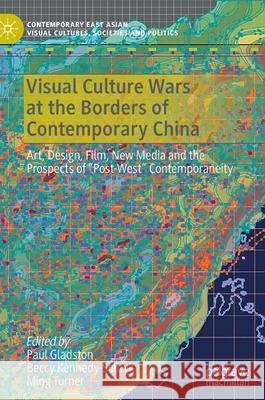Visual Culture Wars at the Borders of Contemporary China: Art, Design, Film, New Media and the Prospects of "Post-West" Contemporaneity » książka
topmenu
Visual Culture Wars at the Borders of Contemporary China: Art, Design, Film, New Media and the Prospects of "Post-West" Contemporaneity
ISBN-13: 9789811652929 / Angielski / Twarda / 2021 / 280 str.
Visual Culture Wars at the Borders of Contemporary China: Art, Design, Film, New Media and the Prospects of "Post-West" Contemporaneity
ISBN-13: 9789811652929 / Angielski / Twarda / 2021 / 280 str.
cena 605,23 zł
(netto: 576,41 VAT: 5%)
Najniższa cena z 30 dni: 539,74 zł
(netto: 576,41 VAT: 5%)
Najniższa cena z 30 dni: 539,74 zł
Termin realizacji zamówienia:
ok. 22 dni roboczych
Bez gwarancji dostawy przed świętami
ok. 22 dni roboczych
Bez gwarancji dostawy przed świętami
Darmowa dostawa!
Kategorie:
Kategorie BISAC:
Wydawca:
Palgrave MacMillan
Seria wydawnicza:
Język:
Angielski
ISBN-13:
9789811652929
Rok wydania:
2021
Wydanie:
2021
Numer serii:
001110021
Ilość stron:
280
Waga:
0.51 kg
Wymiary:
21.01 x 14.81 x 1.91
Oprawa:
Twarda
Wolumenów:
01
Dodatkowe informacje:
Wydanie ilustrowane











